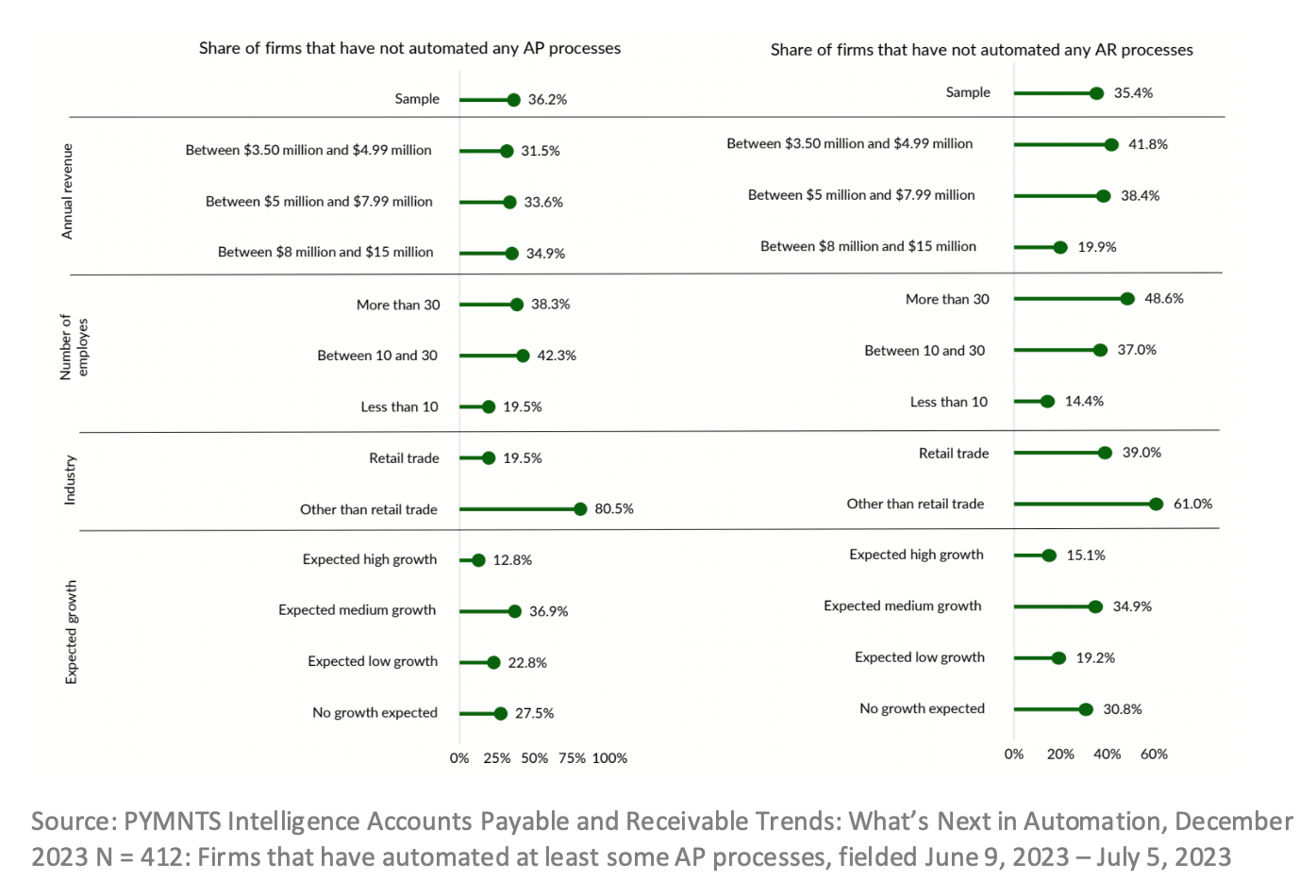Mid-Sized Firms Are Lagging in AP and AR Automation

Automation of business processes among small and medium-sized businesses (SMBs) is traditionally behind the level of adoption shown by larger companies that have more economic and technological resources to allocate to this purpose. Specifically, accounts payable (AP) and accounts receivable (AR) automation implies, among other things, eliminating manual tasks in invoicing and accounting, streamlining operations, and reducing processing time in payment management. This, at the end of the day, is translated into time and cost savings, i.e., improvement in business profitability.
However, despite clear benefits of AP and AR automation, SMBs seem to be prioritizing other areas. According to a recent PYMNTS Intelligence research, around 80% of SMBs of non-retail sectors reviewed have not automated any AP process, and 60% did not automated any AR task yet. High processing cost and fees of implementing this automation systems and operative issues are among the main reasons behind this deficiency.
By the Numbers
These and other insights are detailed in “Accounts Payable and Receivable Trends: What’s Next in Automation,” a PYMNTS Intelligence research study in collaboration with American Express. The study’s findings are based on a survey of 412 executives from mid-sized firms with day-to-day and strategic leadership responsibilities in AP, AR and payments strategy. By mid-sized companies, the study means those generating between $3.5 million and $15 million of annual revenue. Industries covered include retail trade, wholesale trade, food and beverage, professional services, healthcare and construction.
Lack of AP/AR Automation
The fact that the automation is higher in AR processes than in AP shows that the companies analyzed prioritize payment inbounds over outbounds, per cash flow management reasons. However, the level of automation in both is still low.
Overall, the survey reveals that barely 5% of SMBs have automated all AP processes, and a similar share have done so with AR tasks. Beyond better cash flow management, companies cite more efficient and streamlined processes, and better data visibility and insights, as main benefits of automation. Moreover, and increased vendor satisfaction is finally resulting in a better supply-client relationship.
Firms that have automated all processes are more likely to cite a wide range of benefits of automation, indicating that firms will only experience the full benefits of automation if they are fully automated. Although the goal of full automation is a long way off for many companies, more than a third of those that have not yet automated any AP or AR processes plan to do so in the near future. Partial automation may still bring companies significant benefits in their daily business.
